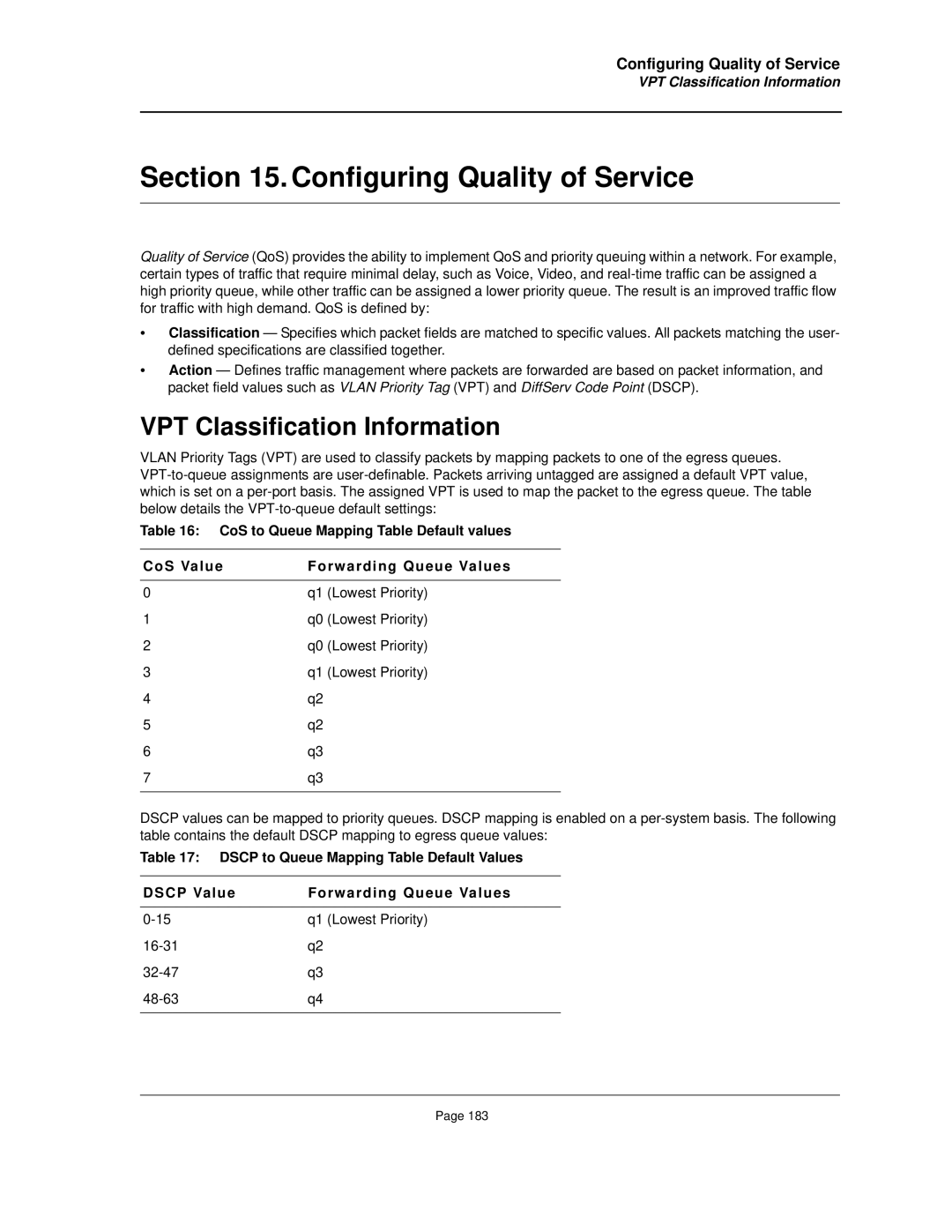
Configuring Quality of Service
VPT Classification Information
Section 15. Configuring Quality of Service
Quality of Service (QoS) provides the ability to implement QoS and priority queuing within a network. For example, certain types of traffic that require minimal delay, such as Voice, Video, and
•Classification — Specifies which packet fields are matched to specific values. All packets matching the user- defined specifications are classified together.
•Action — Defines traffic management where packets are forwarded are based on packet information, and packet field values such as VLAN Priority Tag (VPT) and DiffServ Code Point (DSCP).
VPT Classification Information
VLAN Priority Tags (VPT) are used to classify packets by mapping packets to one of the egress queues.
Table 16: CoS to Queue Mapping Table Default values
CoS Value | Forwarding Queue Values |
|
|
0 | q1 (Lowest Priority) |
1 | q0 (Lowest Priority) |
2 | q0 (Lowest Priority) |
3 | q1 (Lowest Priority) |
4 | q2 |
5 | q2 |
6 | q3 |
7 | q3 |
|
|
DSCP values can be mapped to priority queues. DSCP mapping is enabled on a
Table 17: DSCP to Queue Mapping Table Default Values
DSCP Value | Forwarding Queue Values |
|
|
q1 (Lowest Priority) | |
q2 | |
q3 | |
q4 | |
|
|
Page 183
